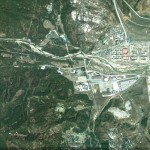According to the JoongAng Ilbo:
North Korea held a rare investors relations event over the weekend and its more capitalistic and entrepreneurial manner hinted at a new openness to foreign investors and economic reform in general.
“The door is wide open. Come on in any time,” said Oh Eung-gil, president of North Korea’s Wonsan District Development General Corporation.
Oh was inviting South Koreans to invest in the North as he addressed a group of businessmen at an investors relations session at the Shangri-La Hotel in Dalian, China, on Saturday.
“We prepared all the conditions to develop Mount Kumgang and waited for the South to change its attitude,” said Oh. “But we can no longer wait, so we are trying to attract foreign investors. We have no intention to exclude the South.”
The investors relations event was arranged by the Dalian chapter of the World Federation of Overseas Korea Traders Association. About 200 Korean businessmen from around the world including Australia, China and the United States attended.
From North Korea, five delegates including Oh joined the event.
The North started its event with a presentation by Oh on the country’s laws governing foreign investments and the business environment.
“We have already simplified the investment application procedures and created regulations that meet international standards,” Oh said.
He spent a considerable amount of time to assuring businessmen that their investments, if made, will not vanish overnight.
“With Article 19 of the Foreign Investment Act, we promise that the assets of foreign investors and their companies won’t be nationalized,” he said. “If they are nationalized for an unavoidable reason, then we will make compensation for all costs.”
He also stressed that the North has abundant mineral and fisheries resources. With its 2 million educated workforce, who graduated from 300 universities, Oh said North Korea is the best place to make investments in Asia.
He said foreign companies that invest in special economic zones will only have to pay 14 percent corporate income tax and that the tax is even lower for some advanced technology industries. Making investments in the North’s infrastructure will also be tax-free, he said.
The North also held an unprecedented question and answer session. At similar events in the past, the North only made presentations without answering investors’ questions.
A businessman said he was afraid that the North Korean government could confiscate his investments, and Oh assured him that the government guarantees all legal investments by laws.
Oh even used humor to answer one businessman’s question.
“I would like to invest in hospitals,” the businessman said.
“Our [Democratic People’s] Republic of Korea offers free medical services, so it will be hard for you to make money,” Oh joked. “Please reconsider.”
Following Oh’s presentation, Ri Sing-ryol, vice president of the Wonsan District Development General Corporation, unveiled a development plan for the Wonsan-Mount Kumgang international tourism zone. He said the zone has 142 historic sites, 11 white-sand coasts and nine lakes, as well as 676 tourist venues.
The North’s Standing Committee of the Supreme People’s Assembly announced in June an ambitious plan to develop the area as an international tourism zone.
“Now that the Kim Jong-un regime is settled, the North’s top priority is resolving economic hardships and strong economic reform is being pushed forward,” said Jin Jiang, chairman of the Dalian Chapter of the World Federation of Overseas Korea Traders Association.
According to the Donga-Ilbo, the patchy subject of Hyundai Asan’s assets came up:
North Korea requested South Korea to make additional investment in Mount Kumgang and Wonsan areas, claiming that “it never confiscated the South’s property,” which it had forfeited and frozen in April 2010. Oh Eung Kil, general president of Wonsan district development company under the North’s external economy ministry, told South Korean reporters at an informational session on investment in the North in Dalian, Liaoning Province, China on Saturday.
“We did not confiscate Hyundai (Asan)’s asset. We will not confiscate and will wait (going forward). We have waited for long (thus far),” Oh said. “The South’s asset is just in our territory because it is real estate, and the property is registered in Hyundai’s name.”
Notably, citing the North’s foreign investment act providing that Pyongyang does not nationalize foreigners’ asset, Oh said, “Because we cannot afford to continue waiting, blindly trusting the South, we will form ties with investors from various countries. Still, we are not excluding the South. The door is open.”
In April 2010, the North implemented a slew of measures, including forfeiture of the South Korean government’s assets such as a separated family reunion house, freezing of private sector assets including duty-free shops, and deportation of management staff. In 2011, the North enacted the “Mount Kumgang international tourism district act,” and deprived Hyundai Asan of the exclusive right to tourism projects. Hotels and other assets that were owned by Hyundai are currently operated by the North Korean authority. Experts say, “The North’s move is aimed at denying its forfeiture of Hyundai Asan’s assets, which was negatively regarded by foreigners, and displaying situation of improved investment environment.”
Meanwhile, Oh said, “Foreign shipment of unprocessed natural resources has been designated as an additional item subject to restriction of investment into North Korea.” While banning shipment of coals and others without processing in North Korea by foreign investors, the North intends to allow processing of such resources within the Stalinist country. Since the North Korean authority singled out “sale of valuable natural resources at bargain prices as a unpatriotic act” as one of the crimes allegedly committed by Jang Song Thaek who was executed late last year, Pyongyang is believed to have strictly restricted foreign shipment of natural resources.
Here is additional coverage in the Choson Ilbo.
Other posts on the Wonsan-Mt. Kumgang International Tourist Zone here. See the category tab on the right for more.
Read the full stories here:
Pyongyang woos foreign investors
JoongAng Ilbo
Choi Hyung-Kyu
2014-9-22
N.K.: ‘We never confiscated facilities from Hyundai Asan’
Donga-Ilbo
2014-9-22

